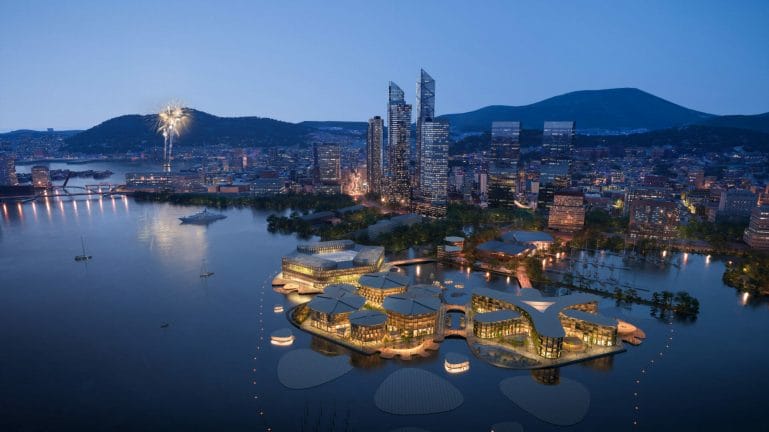
UN-Habitat, the Busan Metropolitan City of the Republic of Korea, and OCEANIX – a sustainable floating city developer revealed the design of the world’s prototype sustainable flood-proof floating city on 26th April 2022 at the UN headquarters.
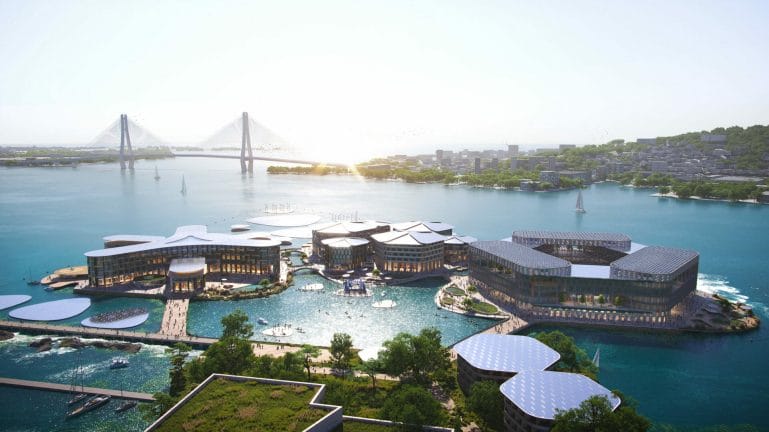
Oceanix Busan is a floating city designed in collaboration with architecture firms BIG and Samoo to provide technological advancements to the coastal areas dealing with flooding and land shortages aggravated by Climatic threats. It is a sustainable, resilient, and flood-proof development broadening the horizon of urban infrastructure. The design imitates the urban fabric of the city for the architecture of the floating city to meld with the neighborhood.
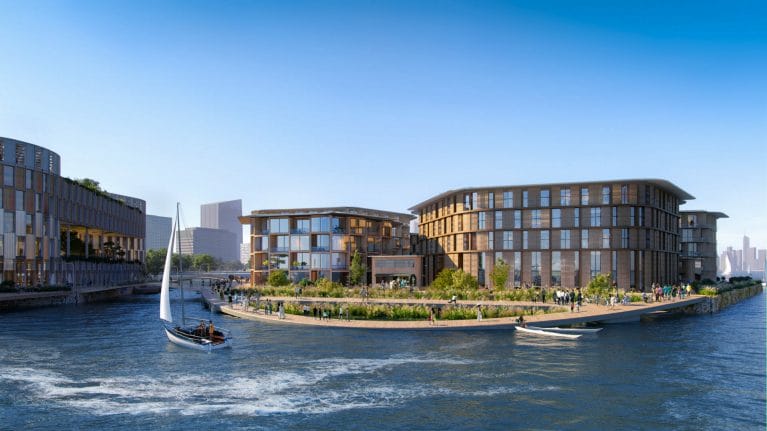
The studies suggest that two out of every five people reside within 100 kilometers of the coastal area and 90 percent of the cities of the world are exposed to rising sea levels which leads to flooding. Flooding destroys infrastructure necessitating climate refugees to leave their hard-earned dwellings. The shortage of land leaves no way other than moving the urban settlements near to the coasts which not only hampers the environment but also increases the housing costs that ultimately exclude the economically unstable families from accessing these settlements.
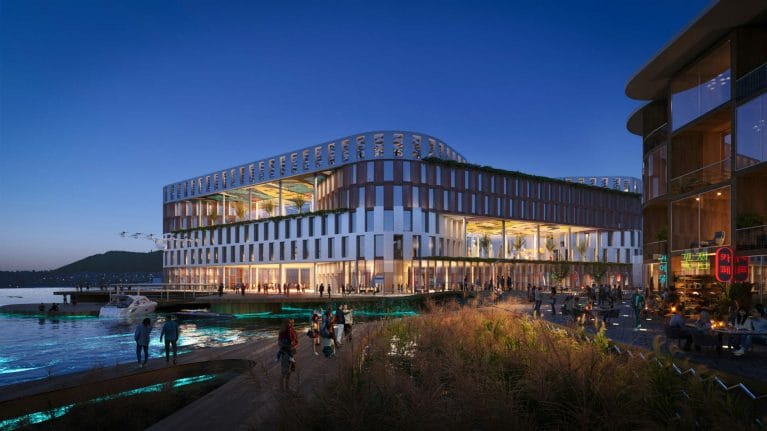
To combat all these problems and transform Busan into a green city, the initiative of designing a floating city with the credo ‘The First to the Future’ was launched at the UN Roundtable in 2019, and the design is unveiled in the successive roundtable this year. The development will house three platforms initially accommodating 12,000 guests but the maximum limit of expansion in the future would be 20 platforms. It is designed with a series of interwoven neighborhoods with an area of 30,000 to 40,000 sq m each. Every neighborhood will serve different purposes – one for living, another acting as a lodging platform for visitors, and the last one for research.
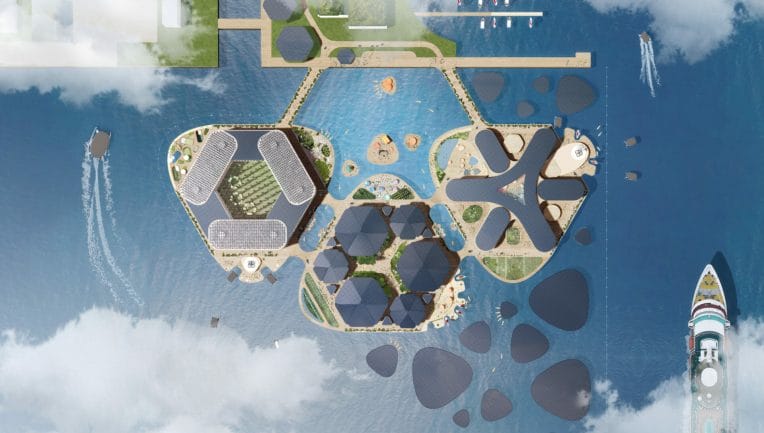
Oceanix Busan is a sustainable prototype of maritime development and a combination of new and old. The housing platform will have the provision of varied living formats with alleys of stores and local food vendors. The research platform is meant for maritime study and providing green economy jobs in areas like a habitat regeneration center, maker spaces, and dorms. The visitor platform will have amenities for tourists, eco-lodging facilities, and organic dining. The three platforms will be connected with link-span bridges.
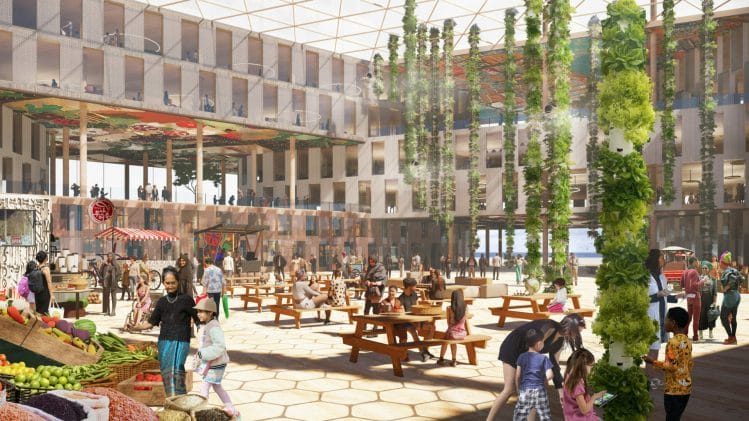
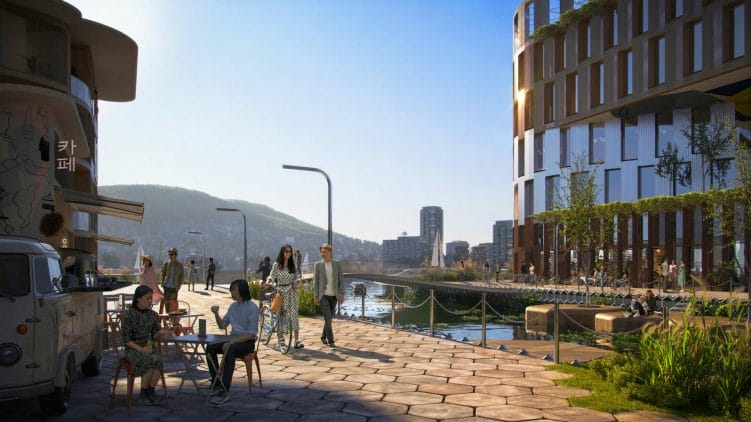

The floating city focuses on low-rise and wind-resistant building design, terraces for outdoor-indoor living, and greenhouses and gardens to create a temperature-controlled environment and grow food. The city model has several outposts with photovoltaic panels and greenhouses with the potential for expansion or contraction as and when required.
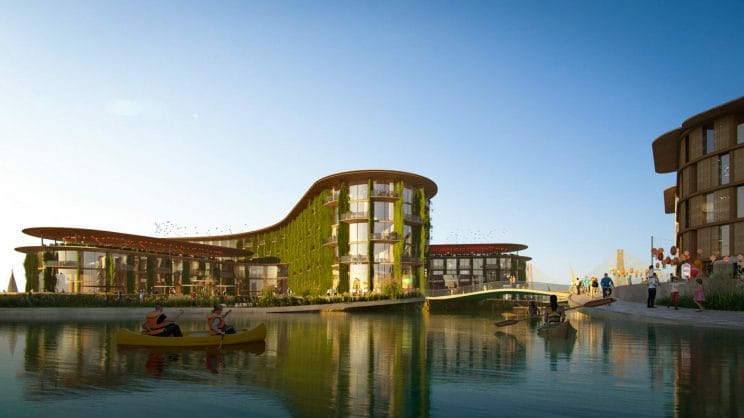
Busan is instilled with six integrated systems – coastal habitat regeneration, net zero energy, closed loop water systems, food, zero waste and circular systems, and innovative mobility. The systems collectively will generate 100 percent operational energy needed on site through rooftop and floating photovoltaic cells. Each neighborhood is designed to treat and replenish its water and recycle other resources. This floating city is an innovative solution to battle against global challenges and foster a community.




















